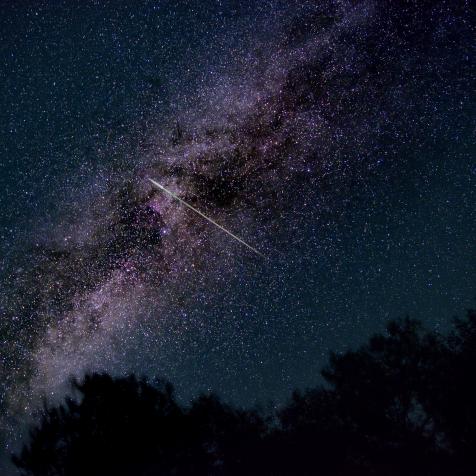
Rapeepong Puttakumwong
This Is How Our Sun Will Die

Every star you see in the sky, including the sun, will someday die. It’s best to get used to that idea now, before things start to get heavy.
Thankfully, we’ve got a little bit of time.
Our sun currently powers itself through the fusion of hydrogen into helium in its core. This is generally a good thing, since that fusion process provides all the heat and light and warmth that we have come to enjoy on our little watery rock, 93 million miles away.
But just like ignoring the little red “E” on your gas gauge and getting stuck on your commute to work, eventually the sun will run out of fuel. There will still be plenty of hydrogen in the sun, mind you, but it won’t be down in the core where it can be put to any good use.
With no source of energy to counteract the tireless inward pull of gravity (the same pull of gravity that constantly keeps your feet planted to the ground), the sun will contract. As it contracts, the temperatures and pressures in the core continue to climb (because what else would they do) until they reach a critical point: the point at which helium itself can fuse into carbon and oxygen, again releasing energy and returning the sun to its former glory. Almost.
At this point the core of our sun has a temperature of around 100 million Kelvin. Did I mention that?
Step by Step Process, Sort Of

NASA/Bryan Allen
With a core that intense, blazing out radiation like crazy, the outer layers of the sun (made up of all that unused hydrogen and other random elements) bloat up and stretch out. The distended solar atmosphere swells to over 200 times its current radius, bringing the surface of the sun within spitting distance of the Earth. Scorching, insane spitting distance.
But then the helium runs out. The sun collapses. Then it reignites. The sun enlarges. Then it collapses. Then it reignites. Then it enlarges. And so on and so on, a gruesome dance as the sun tears itself apart.
With each new cycle, some parts of the sun’s atmosphere detach completely, billowing out into the solar system, like tattered sails riding on winds of super-heated particles. Eventually, all that will be left is a core of leftover carbon and oxygen–the sun doesn’t have enough gravitational heft to fuse anything heavier. Surrounding that core (now more properly known as a white dwarf, because it’s literally white-hot and relatively small as astronomical objects go) is the leftover guts of our sun, spread throughout the now-defunct solar system.
The intense radiation from the newly-unveiled core (we’re talking X-rays here) rip through those guts, igniting them and enlightening them, causing them to release radiation of their own. The physics word to describe this process is fluorescence, and it’s the exact same physics behind fluorescent light bulbs.
But this is a bit bigger. Visible from light-years away, these planetary nebulae are the swansong of a sun-like star. A beautiful, unique, effervescent illuminated masterpiece, lasting a mere 10,000 years before dimming into the quiet void of interstellar space.
The End

Stocktrek
All stars around the mass of the sun will experience this ultimate fate, including, of course, the sun.
But this process won’t begin to unfold for another 5 billion years. Like I said, we’ve got a little bit of time.



















